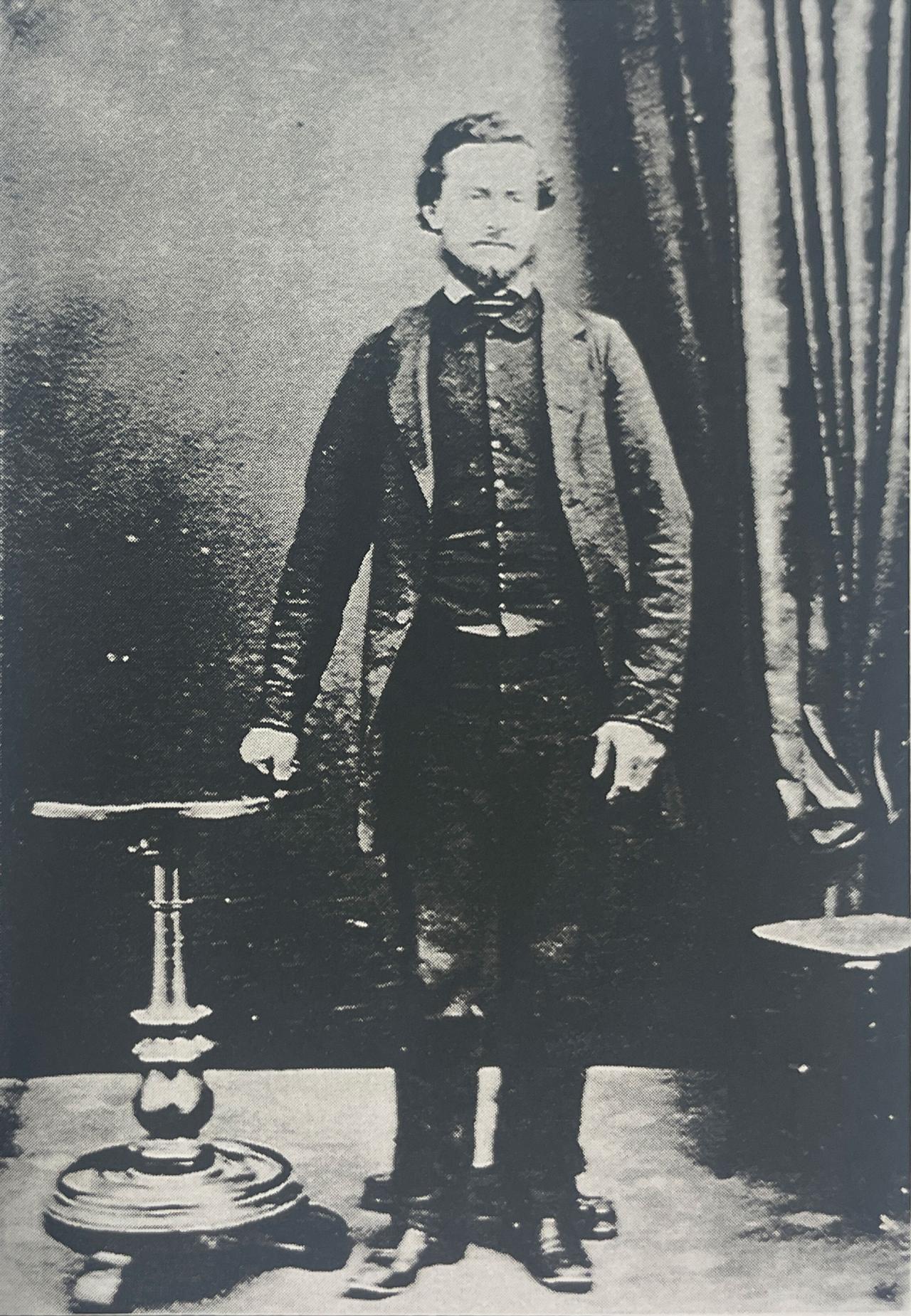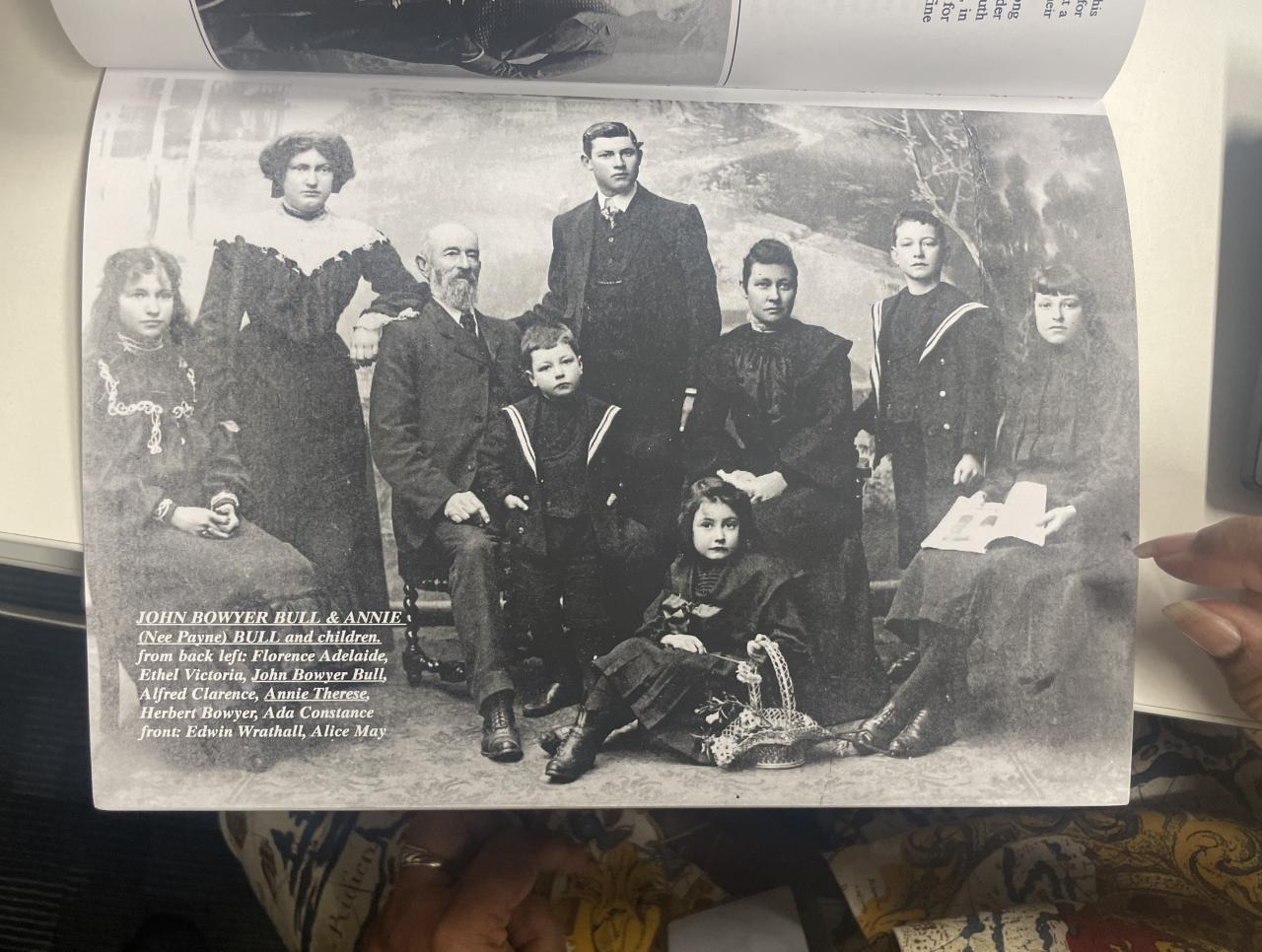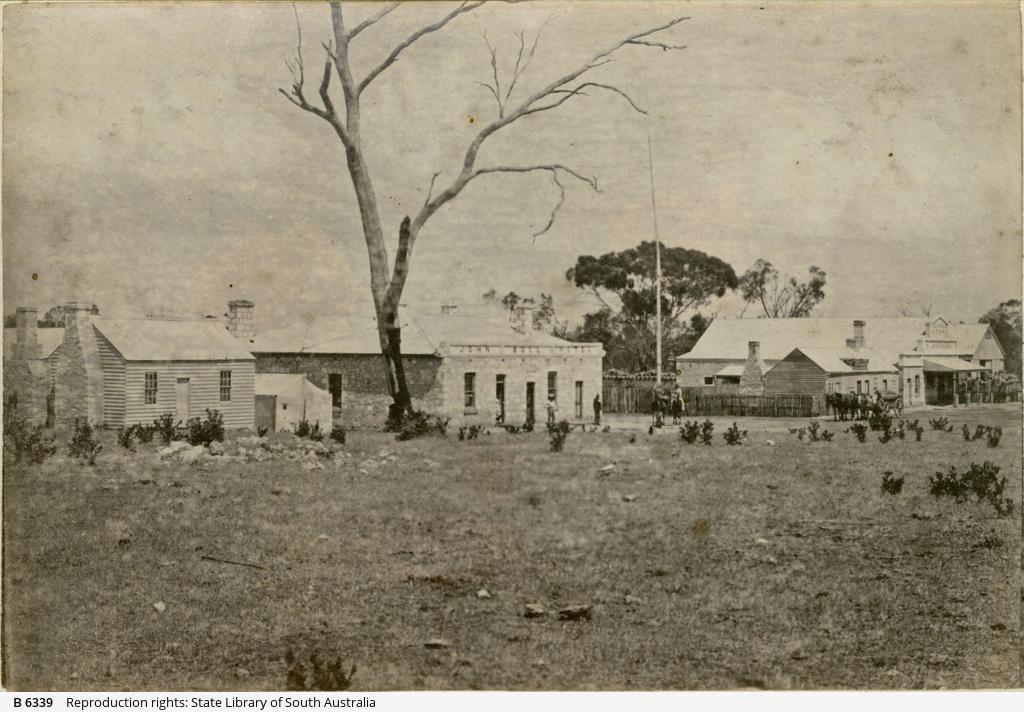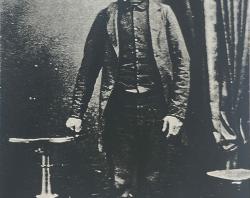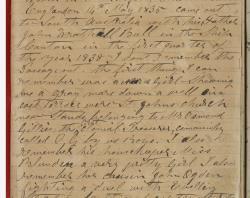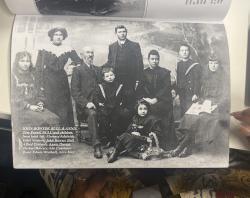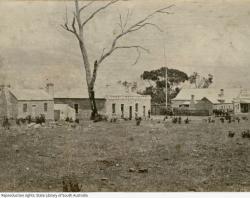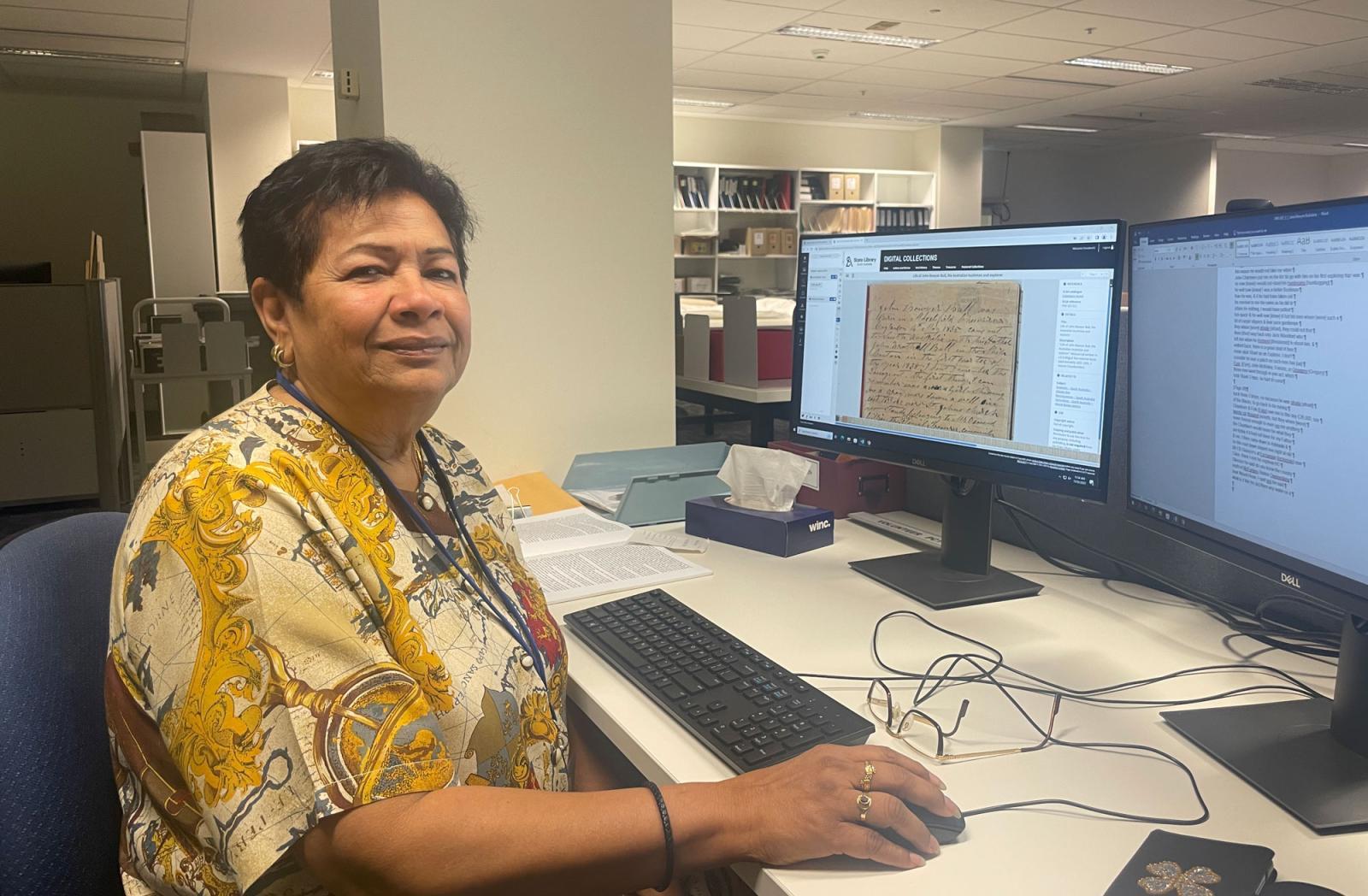
“The activities I do as an archival volunteer helps make archives accessible to everyone.” ~ Chris Reardon
Volunteering for a chosen cause comes from many motivations, whether it's a desire to give back, support a personal connection, or simply a passion for using skills and knowledge to benefit others. Those who dedicate their time and commitment to such endeavors are remarkable individuals. At the State Library, we're fortunate to have a diverse team of dedicated volunteers who contribute to both front-of-house activities and back-of-house projects.
Take Christina Reardon, known as Chris. With over two decades of professional experience as an archivist, Chris retired and soon chose to volunteer with the State Library in 2014, keeping her passion for history and archives alive.
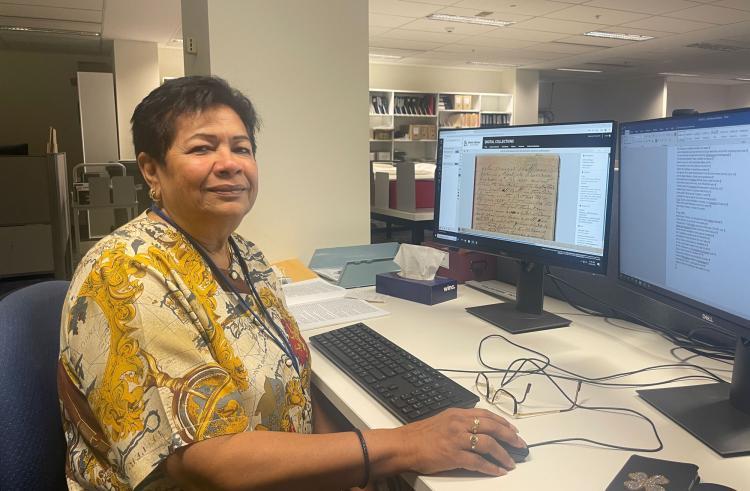
We spoke with Chris to talk about what drove her to volunteer with the State Library, her professional past and her passion for archives.
Chris's journey into the world of archives traces back to her days at the University of Madras in India, where she pursued a Masters in English Literature, delving into the social history of England. Relocating to South Australia in 1972, she found similarities in the society and history of her new home, thanks to her academic background.
Her passion led her to seek a career at the South Australian Archives office, where she witnessed significant shifts in archival governance. You can read more about the history of the State Records of SA here. When Chris began working the archives office was in the basement of the State Library’s Mortlock Chamber, but by 1987 had outgrown the space and moved to a purpose-built premises in the northern suburb of Gepps Cross.
One notable project during her time in State Records SA that Chris and her team were involved with was the conservation and indexing of the Women’s Suffrage Petition of 1894, a collaborative effort with the State Library that left a lasting impact, with the petitions now proudly displayed in South Australian's House of Assembly.
“I like studying history. I’ve always been fascinated by handwritten journals and the old way of spelling and writing.”
Retiring from the government in 2013, Chris sought volunteering opportunities within the archives at the State Library, offering a diverse range of projects to contribute to.
Chris’s first project involved the State Library’s SA Red Cross Information Bureau collection. Chris along with a fellow volunteer assisted several staff in the digitisation of the ‘Red Cross packets’ which contained letters and records relating to missing or injured WW1 soldiers. These packets are available to explore on the SA Red Cross Information Bureau website.
In the lead up to the 2019 centenary of the Great Air Race of 1919, the State Library began the ‘Smith Brothers Project’ which saw the South Australian-born Smith brothers, along with their mechanics, fly from England to Australia in a Vickers Vimy aircraft. Chris’ enthusiasm for transcription came to the fore when she transcribed the journal kept by Sir Keith Smith during the flight, which you can view online. The archive formed the basis of an exhibition at the State Library to celebrate the race’s 100th anniversary, which has been developed into the Heroes of the Skies website.
“The Smith Brothers project was very interesting and intellectually satisfying to work on.”
Transcribing the journal of John Bowyer Bull (1835-1907), a pioneer bushman and explorer, has offered Chris invaluable insights into South Australia's history. Written in a humble ‘Wigg and Son’ notebook over a 20-year period (circa 1885 to 1855), it has the title ‘Life of John Bowyer Bull, the Australian bushman and explorer’.

The hand-written journal depicts John’s life as a bushman, explorer and gold prospector, during his time travelling in and around Ballarat and Bendigo. When 15-16 years old John worked on a cattle station and couldn’t read or write. A station-hand helped him to learn and gave him books to read, John, effectively, taught himself to read and write. Whilst working with the journal Chris observes,
“Sometimes his writing and spelling is hard to decipher, but if you are working on a journal for awhile, you soon learn and notice the patterns of the writers script and spelling. John’s spelling errors are often the phonetical spelling of the word, rather than the actual spelling. Back in the 1800’s not everyone easy access to and education let alone a dictionary.”
Chris notes that she often determines a phonetically spelt word by saying it out loud, one such example from John’s journal is ‘Fatle’ meaning fatal.
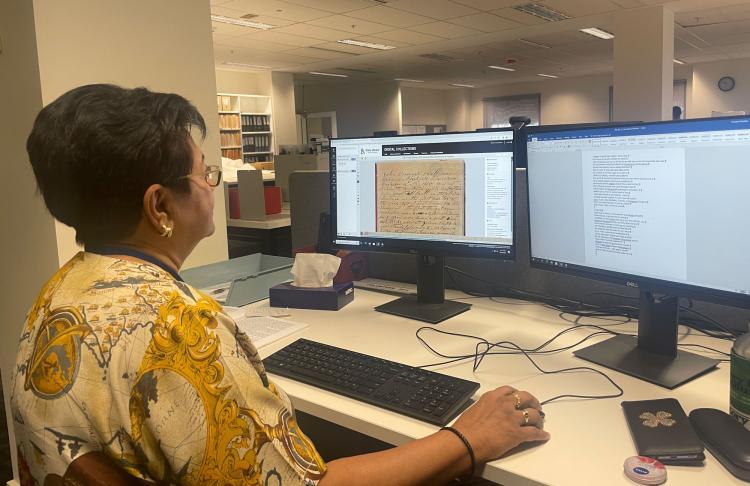
Despite the challenges of deciphering archaic handwriting and spelling, Chris's commitment to preserving primary sources remains unwavering. Beyond the historical accounts, Chris delights in sharing anecdotes like that of John Bull's father, John Wrathall Bull, who claimed to have invented the reaper, sparking tales of innovation and ingenuity from the past.
“His father drew up the designs for a harvest reaper and then claimed that John Ridley stole and improved the designs to invent the ‘Ridley Stripper’ which went on to become the world’s first mechanical grain harvester.”
It’s easy to see how anyone with an enthusiasm for history can get lost in the stories within the archives of the State Library. Chris's dedication and enthusiasm for history shows the spirit of volunteering at the State Library.
We thank Chris for her invaluable contributions to our archival team and the broader community.
